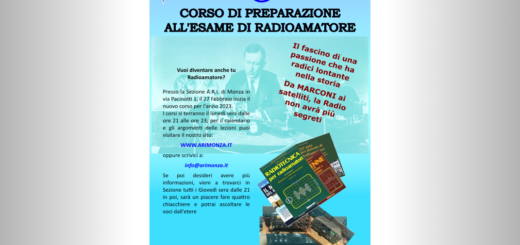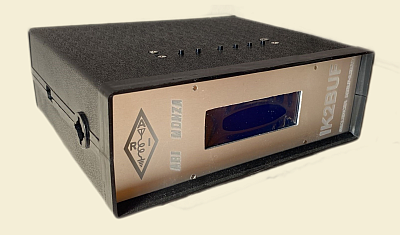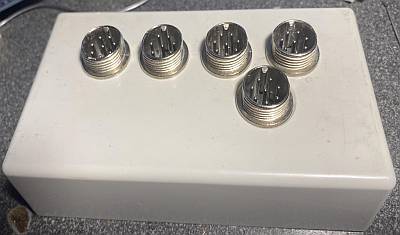contatto 26 Aprile
An International Space Station school contact has been planned for Scott Tingle KG5NZA with Zespol Szkoly Podstawowej i Publicznego Gimnazjum w Buczku, Buczek; I Liceum Ogolnoksztacace im. Tadeusza Kosciuszki w Lasku, Lask; Zespol Szkol Ponadgimnazjalnych w Zelowie, Zelow, Poland.
The event is scheduled on Thursday 26 April 2018 at approximately 10.52 UTC.
The contact will be a direct operated by SP7KYL.
The contact should be audible in parts of Europe. Interested parties are invited to listen in on the 145.800 MHz FM downlink.
School Information:
Three schools participate in one ARISS school contact. The Complex of High Schools in Zelow and The 1st High School in Lask were invited to cooperate with the main organizer of the event: The Complex of the Primary School and the Junior High School in Buczek, because students from one school very often continue their education in another school on the next educational level.
These three schools are an example of education levels in Poland. They are situated in the central part of Poland. The Complex of the Primary School and the Junior High School (Zespol Szkoly Podstawowej i Publicznego Gimnazjum) in Buczek is a primary school together with a secondary school. Since 2016 the school has been changed into one Primary School. It is a community school located in the center of Poland. The school was built in 1950, there are 18 classrooms, 2 IT rooms, a canteen, two ordinary gym rooms and one newly constructed modern gym. There are 369 students at school and highly educated staff. The school is known for its safety, warmth, friendship and working together. Zelow is located about 6 km from Buczek.
The Complex of High Schools (Zespol Szkol Ogolnoksztalacych ) in Zelow consists of the primary school, junior school, and secondary school. The secondary school was built in 1957, whereas in 1999 the Complex of schools have been established. There are 23 classrooms, modern library assembly hall, gym, sports ground and observatory equipped with the camera registering bolides and transferring the data to the Polish Bolides Net. 363 students attend our school. The school is famous for realizing various projects and cooperation with different organizations, i.e. Amnesty International. Since 2017 teachers and students have been participating in the program Erasmus.
Lask is located about 10km from Buczek and about 15km from Zelow. The 1st High School (I Liceum Ogolnoksztalcące im. Tadeusza Kosciuszki) in Lask is the oldest Polish secondary school in this city. It is an outstanding didactic institution which has been sustaining the highest level of education as well as the place of particular aura, where all the graduates have been talking with pleasure and sentiment about. Having worked for years with the original methods with talented students has contributed to the high place of our school in the national school rankings. This success is owed to the plenty of students who have won diverse contests in different subjects. Graduated students continue higher education studying.
The Amateur Radio Club SP7KYL is Association of Communication Section of Sport and Recreation JUPITER of Belchatow Power Plant. The Club unites 10 actively working licensed amateurs radio members. The club was founded in 1980. The Club launched and take care of two amateur radio analogous repeaters SR7E (2m) and SR7EB (70cm). The club is also co-organizer of national HAM radio technical meetings: SP-QRP Workshops (2007-2011) and The Technical Shortwave Convent (Zjazd Techniczny Krotkofalowcow) in Burzenin (since 2012). Members from this clubs visited and installed HAM radio equipment in each of mentioned schools to give their students a unique opportunity to talk by HAM radio.
Participants will ask as many of the following questions as time allows:
1. Alicja (15, B): What was the most interesting occurrence that you came across during your space trip and at the space station?
2. Piotr (17, Z): What are scientific experiments carried out on the space station at present?
3. Joanna (18, L): Can you describe how did the aurora looked like from the ISS and what did you feel when you saw it the first time?
4. Bartosz (15, B): Does being in space contribute to a faster aging of cells?
5. Magdalena (14, Z): What do astronauts feel while approaching earth during the return?
6. Mateusz (18, L): What do you think about the importance of a HAM radio school contacts?
7. Patrycja (15, B): How do astronauts weld metals while repairing broken ISS station?
8. Jakub (16, Z): How do you keep in touch with your family?
9. Agnieszka (17, L): What do you do on the International Space Station if one of you gets ill and, for example, needs to have an immediate surgical removal of an appendix?
10. Blazej (15, B): How often do you have to correct the ISS orbit to avoid space trash?
11. Nikola (16, Z): Which skills are the most important to become an astronaut?
12. Remigiusz (17, L): Is it hard to get used to weightlessness?
13. Lukasz (14, B): What is your biggest dislike being in space?
14. Bartlomiej (15, Z): How well does your training help you to cope with the mental and physical changes that occur on travel to and from space?
15. Dominik (17, L): What is the maximum duration that your mission in space can be?
Where:
B stands for General Education School Complex in Buczek
L stands for Ist Secondary School in Lask
Z stands for General Education School Complex In Zelow
About ARISS:
Amateur Radio on the International Space Station (ARISS) is a cooperative venture of international amateur radio societies and the space agencies that support the International Space Station: NASA, Russian Space Agency, ESA, JAXA, and CSA. The US Center for the Advancement of Science in Space (CASIS) and the National Aeronautics and Space Administration (NASA) provide ARISS special support.
ARISS offers an opportunity for students to experience the excitement of Amateur Radio by talking directly with crewmembers on board the International Space Station. Teachers, parents and communities see, first hand, how Amateur Radio and crewmembers on ISS can energize youngsters’ interest in science, technology, and learning.
The primary goal of ARISS is to promote exploration of science, technology, engineering, and mathematics (STEM) topics by organizing scheduled contacts via amateur radio between crew members aboard the ISS and students in classrooms or informal education venues. With the help of experienced amateur radio volunteers, ISS crews speak directly with large audiences in a variety of public forums. Before and during these radio contacts, students, teachers, parents, and communities learn about space, space technologies, and amateur radio. For more information, see www.ariss.org, www.ariss-eu.organd https://www.amsat-on.be/hamtv-summary/.






